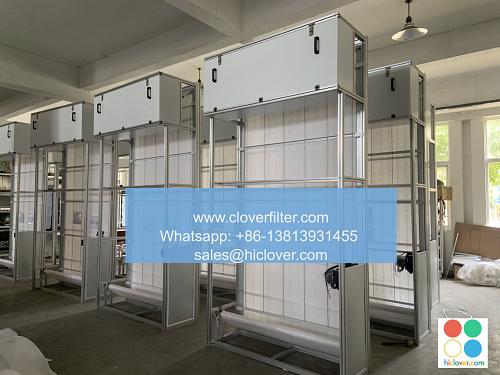The Future of Air Filter Manufacturing: 3D Printing and Additive Manufacturing

The air filter manufacturing industry is on the cusp of a revolution, driven by the increasing adoption of 3D printing and additive manufacturing technologies. These innovative methods are transforming the way air filters are designed, produced, and used, enabling the creation of complex geometries, customized solutions, and improved performance. In this article, we will explore the current state of air filter manufacturing, the benefits of 3D printing and additive manufacturing, and the various application areas where these technologies are making a significant impact.
Current State of Air Filter Manufacturing
Traditional air filter manufacturing involves the use of subtractive manufacturing methods, such as cutting and machining, to produce filters from raw materials. While these methods are well-established and widely used, they have limitations, including the production of waste materials, high energy consumption, and limited design flexibility. In contrast, 3D printing and additive manufacturing offer a more efficient, sustainable, and flexible approach to air filter production.
Benefits of 3D Printing and Additive Manufacturing
The use of 3D printing and additive manufacturing in air filter manufacturing offers several benefits, including:
* Increased design flexibility: Complex geometries and customized designs can be easily produced using 3D printing and additive manufacturing, enabling the creation of filters with improved performance and efficiency.
* Reduced material waste: Additive manufacturing methods produce minimal waste, reducing the environmental impact of air filter production.
* Improved product quality: 3D printing and additive manufacturing enable the production of filters with consistent quality and performance, reducing the risk of defects and improving overall reliability.
* Customization and personalization: Additive manufacturing methods enable the production of customized filters tailored to specific applications and requirements, such as industrial air filtration, HEPA filtration, and air purification systems.
Application Areas
The use of 3D printing and additive manufacturing in air filter manufacturing has various application areas, including:
* Aerospace and defense: Customized air filters for aircraft, spacecraft, and military vehicles, requiring high-performance and reliability.
* Industrial air filtration: Filters for industrial processes, such as chemical processing, pharmaceutical manufacturing, and food processing, requiring high-efficiency and customized solutions.
* Healthcare and medical: HEPA filters and ultrafine particle filters for hospitals, clinics, and medical devices, requiring high-performance and sterility.
* Automotive and transportation: Air filters for vehicles, including cars, trucks, and buses, requiring high-performance, durability, and customized designs.
* Consumer products and appliances: Air filters for air purifiers, vacuum cleaners, and HVAC systems, requiring high-efficiency, low-maintenance, and customized solutions.
Challenges and Future Directions
While 3D printing and additive manufacturing offer significant benefits for air filter manufacturing, there are challenges to be addressed, including:
* Scalability and cost-effectiveness: Currently, 3D printing and additive manufacturing can be more expensive than traditional methods, requiring economies of scale to reduce costs.
* Material development and testing: New materials and testing protocols are needed to ensure the performance, safety, and reliability of 3D printed and additively manufactured air filters.
* Regulatory frameworks and standards: Regulatory frameworks and standards need to be developed and updated to accommodate the use of 3D printing and additive manufacturing in air filter production.
In conclusion, the future of air filter manufacturing is being shaped by the increasing adoption of 3D printing and additive manufacturing technologies. These innovative methods offer improved performance, sustainability, and customization, enabling the creation of complex geometries, high-efficiency filters, and tailored solutions for various application areas. As the industry continues to evolve, addressing challenges and developing new materials, testing protocols, and regulatory frameworks will be crucial to unlocking the full potential of 3D printing and additive manufacturing in air filter manufacturing. It seems like you didn’t include a prompt. Please go ahead and provide one, and I’ll do my best to assist you!

